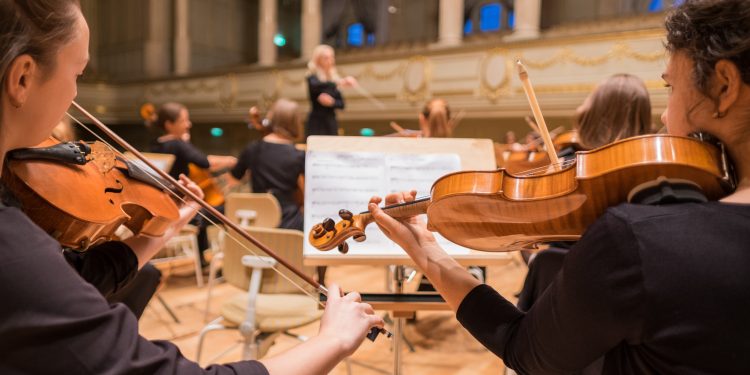Beginning violin lessons provided in this course enable students to build skills through an organized learning program. Beginners learn the fundamentals, including proper posture when holding their instrument and positioning of bow.
Antoinette has noticed over time that her violin studio draws many adult learners! So what draws these adults to music lessons?
1. What is the Violin?
The violin is a string instrument with four strings. The viola, the larger sister of the violin, produces similar sounds but with thicker strings played with a bow; an orchestra generally comprises 10-14 violas that often provide harmony for their performances.
Violins create sound by vibrating their plates and compressing and then expanding the air around them (known as Helmholtz corners). This produces waves at certain frequencies which our ears perceive as sound.
F-holes on both the top and sides of the body help transmit vibrations into the air, while on top there is a bridge connecting string ends to its tailpiece – its shape helps maximize energy production through vibrational transference toward its tailpiece.
2. What is the Bow?
A bow is a long piece of wood covered in horsehair that you use to produce sound on an instrument, such as violin. Violin teachers will often mention how important understanding how it works can be when explaining techniques; thus it’s essential for beginners and advanced violin students alike.
Bow and arrow weapons have long been utilized by humans for hunting and aggression. By harnessing our bodies’ natural capacity for throwing projectiles, they allow hunters to more effectively exploit previously inaccessible regions while hunting more efficiently overall.
A bow consists of an elastic semi-rigid limb connected by an ultra high tensile bowstring and used to fire an arrow. Arguably the most effective weapon ever developed by humankind, bows have been in use since before written history existed.
3. What is the Fingerboard?
A violin’s fingerboard is a long black surface extending some way up its body. Your left-hand fingers use this area of the instrument to produce various notes when playing its strings.
The fingerboard of an electric bass guitar typically consists of ebony; however, cheaper instruments may feature stained or painted fingerboards with stained or painted inlays instead. Its shape conforms to an exact transverse curve while featuring a subtle lengthwise scoop which increases in prominence with lower strings.
String players rely heavily on this “fingerboard chart,” as they must place their fingers correctly on various parts of the fingerboard in order to play various musical pieces. Vibrato is an essential technique used by string players as it subtly alters pitch when stopping notes with finger movement up or down string.
4. What is the Bridge?
A bridge is a component of a song that provides a change in pace, melody and/or instrumental sound that distinguishes its performance from other songs in its genre. It may also serve to highlight particular parts of a piece by switching key or adding guitar parts – creating contrast that stands out.
A violin can play open strings simultaneously with stopped notes, enabling more freely vibrating strings to produce different tones and sounds (though some composers require using an entire string with stops on it to prevent this effect).
Playing point of a string also has an effect on its timbre, with closer playing producing louder sounds and exact placement of bow can have similar results.
5. What is the Sound Post?
A sound post, also referred to as the ‘anima’ (soul), is an important component of string instruments. It gives violin family instruments their distinctive loudness by translating vibrations from strings into patterns which project sound onto front and back plates of an instrument.
It should be positioned a few millimeters inside and slightly behind the treble bridge foot for optimal placement. Placing it properly requires extensive experience for best results.
The sound post is constructed from spruce wood – similar to what is used for violin tops – with its ends precisely cut to fit within the notches in both bass bar and treble bridge foot to maximize vibration transmission.
In conclusion,are you ready to unlock the potential of the violin and become a better musician? Search for ukulele classes near me to find local teachers and start exploring the world of violin. Good luck!





